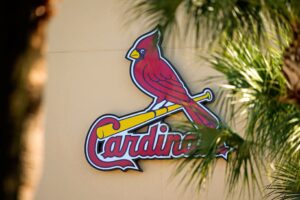In a recent article, we took a look at where the 2013 season all went wrong for the Atlanta Braves. A strong regular season showing was ultimately wasted with a lackluster performance against the Los Angeles Dodgers in the NLDS. While Atlanta would head home early, the future still looked quite bright for the franchise.
Despite dealing with poor contracts handed out to Dan Uggla and Melvin Upton Jr. (then still going by B.J.), the Braves had stocked up on talented players still in their 20s. A few smart draft classes and international signing periods would have restocked the farm system, and the baseball machine in Atlanta appeared to be back on track after a lengthy delay. Unfortunately, a disappointing 2014 brought about an organizational rebuild. While that season exposed some flaws in the state of the franchise, three specific injuries helped force the Braves into a rebuild.
Three Injuries That Forced the Atlanta Braves Rebuild
Tim Hudson fractures ankle in final season under contract
This injury was dealt with at length when discussing Atlanta’s disappointing end to 2013. However, the significance of the injury needs to be revisited. Hudson did not have the best numbers of the pitching staff through 21 starts that season. In fact, Julio Teheran, Kris Medlen, and Mike Minor all out-performed Hudson’s traditional numbers. However, his FIP and other statistics gave reason to believe he would have finished 2013 with numbers quite similar to the other three.
When it was all said and done, Hudson entered the free agent market with a 3.97 ERA over 21 starts in 2013. Additionally, he was entering his age-38 season while also trying to work his way back from a nasty ankle injury. Atlanta did not re-sign the veteran starter, and he instead signed a two-year, $23 million contract with the San Francisco Giants.
Letting Hudson walk for that price tag with his other issues seemed smart at the time. Unfortunately, Hudson showed in 2014 that he could still contribute to a pitching staff. Atlanta also quickly found themselves in dire need of pitching help. (More on that later.) Though there was no way management could foresee the tough times ahead, passing on a pitcher of Hudson’s caliber now looms large in hindsight.
Kris Medlen undergoes a second Tommy John surgery
Atlanta entered 2014 with expectations of a repeat in the NL East. One reason for that expectation was what appeared to be a solid rotation. Medlen and Minor were ready to take the reigns as leaders of the rotation while Teheran continued to flash immense potential as a youngster. Unfortunately, what transpired leading up to Opening Day 2014 remains a nightmare for many Braves fans.
The image of Medlen heading straight to the dugout after a pitch in Spring Training is still a disheartening image. A later exam revealed the tough news: another TJ surgery was needed. Because of a previous operation and splitting time between the bullpen and rotation early in his career, few fans outside of Atlanta understood how good Medlen was from 2012-13. He was on his way to a decent contract and long run with the Braves rotation before his second injury. He never threw another pitch in a Braves uniform and left a big void in the rotation.
Brandon Beachy suffers same fate as Medlen
Beachy’s time in a Braves uniform was memorable but short-lived. From 2011-12, Beachy made 38 starts with 237 strikeouts and a 3.07 ERA. He was blossoming into a front-end starter until Tommy John surgery ended his 2012 campaign after just 13 starts. Nevertheless, he began his return in 2013 and appeared to be close to 100% heading into Spring Training ahead of the 2014 season.
Beachy, however, quickly followed in the same steps as Medlen. Forced to leave a Spring Training start due to his elbow, a second opinion confirmed that he would also need a second TJ operation. In a matter of months, Atlanta went from having two solid veterans and a young up-and-coming star in its rotation to signing veteran stopgap pitchers in Ervin Santana and Aaron Harang.
Last Word
All three injuries mentioned in this article were suffered by starting pitchers, and that leads to a bit of necessary clarification. If you watched the 2014 Braves, you understand that their big deficiency was, in fact, offense. Teheran and Alex Wood led a pitching staff that got 200 innings and a 3.57 ERA out of Harang and another 196 innings out of Santana. However, those two pitchers were only in Atlanta for one season.
Coming out of the 2014 season, the Braves had just two healthy pitchers (Wood and Teheran) with more than 30 MLB starts under their belts. Though still with Atlanta, Minor had already begun developing his own arm issues. He would not make an MLB appearance in 2015.
It is true Atlanta’s biggest issues in 2014 were offensive. However, it is this writer’s opinion that had a solid pitching staff been in place beyond that season, management would have tried to plug the offensive holes without a rebuild. We will never know if that could have been the case. What we do know is the 2014 product fell far short of expectations, and injuries and a poor farm system left the organization incapable of recovering. In particular, these three injuries played a big role in forcing the franchise into a long-term rebuild.
Main Photo:
Embed from Getty Images






